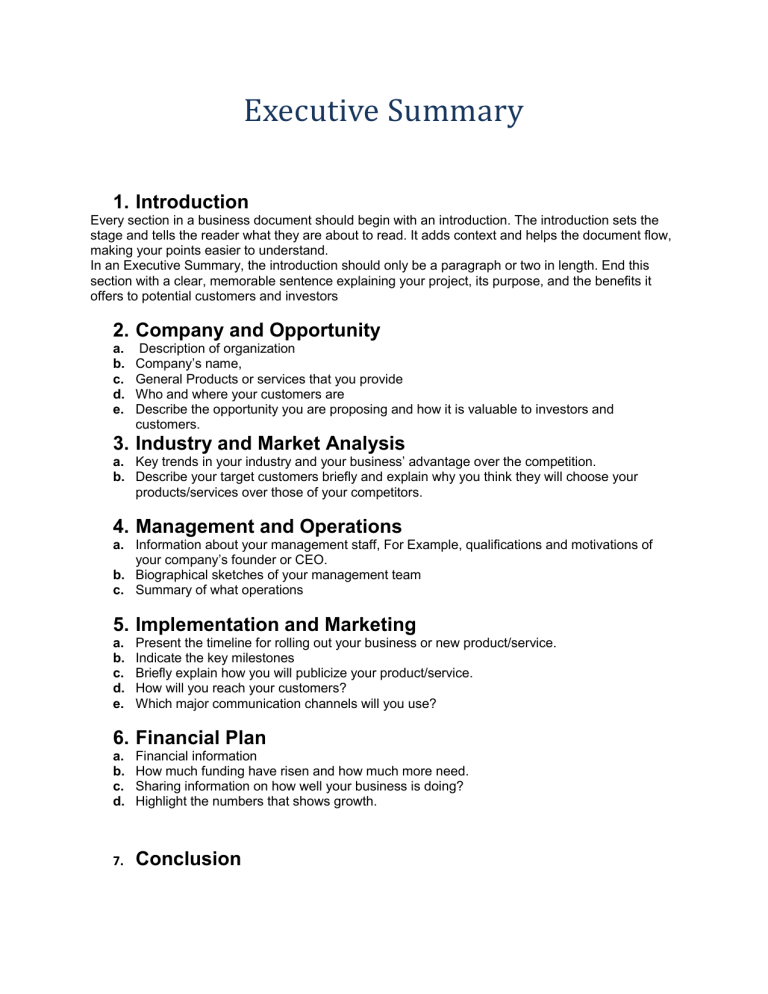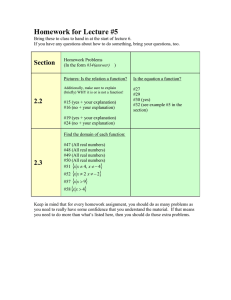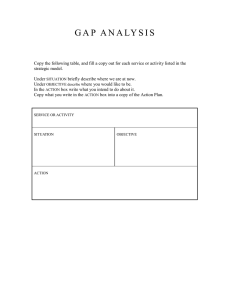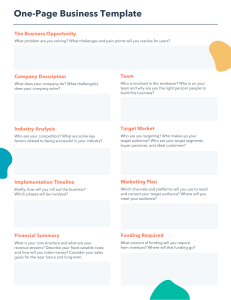
Executive Summary 1. Introduction Every section in a business document should begin with an introduction. The introduction sets the stage and tells the reader what they are about to read. It adds context and helps the document flow, making your points easier to understand. In an Executive Summary, the introduction should only be a paragraph or two in length. End this section with a clear, memorable sentence explaining your project, its purpose, and the benefits it offers to potential customers and investors 2. Company and Opportunity a. b. c. d. e. Description of organization Company’s name, General Products or services that you provide Who and where your customers are Describe the opportunity you are proposing and how it is valuable to investors and customers. 3. Industry and Market Analysis a. Key trends in your industry and your business’ advantage over the competition. b. Describe your target customers briefly and explain why you think they will choose your products/services over those of your competitors. 4. Management and Operations a. Information about your management staff, For Example, qualifications and motivations of your company’s founder or CEO. b. Biographical sketches of your management team c. Summary of what operations 5. Implementation and Marketing a. b. c. d. e. Present the timeline for rolling out your business or new product/service. Indicate the key milestones Briefly explain how you will publicize your product/service. How will you reach your customers? Which major communication channels will you use? 6. Financial Plan a. b. c. d. Financial information How much funding have risen and how much more need. Sharing information on how well your business is doing? Highlight the numbers that shows growth. 7. Conclusion


